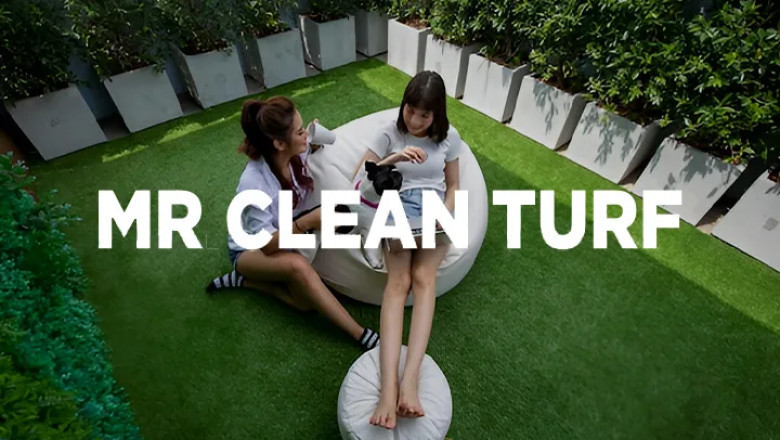views
In a city known for year-round sunshine and extreme summer heat, the rise of artificial turf in Phoenix comes as no surprise. Homeowners and businesses alike are trading in high-maintenance natural grass for synthetic solutions that promise less upkeep and lower water bills.
But before you commit to a full turf transformation, it’s important to weigh the benefits, drawbacks, and unexpected costs. This guide will help you decide whether artificial turf is truly worth it in Arizona’s desert climate.
Why Artificial Turf Is Gaining Popularity in Phoenix
Maintaining a green, natural lawn in Phoenix is no easy task. Between soaring temperatures, water restrictions, and high utility bills, traditional grass can quickly become a financial burden. Artificial turf offers a practical, visually appealing alternative that performs well even under harsh desert conditions.
The Pros of Artificial Turf in Phoenix
1. Major Water Conservation
Artificial turf drastically reduces water consumption. A traditional lawn can require over 50 gallons of water per square foot annually. By contrast, synthetic turf needs only occasional rinsing. This can cut outdoor water usage by as much as 70 percent.
2. Minimal Maintenance
Artificial turf eliminates most of the routine lawn care tasks:
- No mowing
- No fertilizing
- No weeding
- No seasonal seeding
This means less time spent on upkeep and fewer ongoing expenses.
3. Year-Round Curb Appeal
Unlike real grass, synthetic turf maintains its color and texture throughout the year, regardless of weather conditions. It won’t brown during droughts or develop bare spots from foot traffic or pet activity.
4. Long-Term Durability
High-quality artificial turf typically lasts 10 to 20 years, depending on the level of use and maintenance. It's built to withstand Arizona’s sun exposure and frequent use in both residential and commercial settings.
5. Increased Property Value
A well-installed synthetic lawn can improve the appearance of your home or business, adding visual appeal and reducing future landscaping costs—an attractive feature for potential buyers or tenants.
The Cons of Artificial Turf in Phoenix
1. High Initial Cost
Artificial turf installation can range from $8 to $14 per square foot. For a 1,000-square-foot area, that’s $8,000 to $14,000 up front. In comparison, installing sod or seeding natural grass can cost under $1,000, making turf a significant initial investment.
2. Surface Heat
One of the most common concerns about synthetic turf is how hot it can get in direct sunlight. In Phoenix summers, the surface of artificial grass can reach temperatures 20 to 50 degrees higher than natural grass, sometimes exceeding 150°F.
To reduce heat, some homeowners choose:
- Cooling-infused turf products
- Shaded structures like pergolas or awnings
- Misting systems
3. Artificial Feel and Appearance
While premium turf products have improved significantly, they still may not replicate the natural feel of real grass. Some homeowners prefer the scent, softness, and natural variability of a living lawn.
4. Potential Drainage Problems
Improper installation can lead to water pooling, unpleasant odors (especially from pet use), and poor drainage. Choosing an experienced turf installer and proper infill materials can prevent these issues.
Hidden Costs to Consider
Removal and Preparation
Removing existing sod, rock, or concrete and preparing the sub-base can add $1,000 to $2,500 or more to the total project cost.
HOA and Permit Requirements
Some Phoenix neighborhoods have homeowners' associations (HOAs) or city regulations that govern artificial turf use. You may need:
- Specific turf types
- Drainage plans
- Permits or pre-approval
Maintenance Expenses
Although low-maintenance, turf does require some care:
- Rinsing to remove dust and debris
- Occasional brushing to maintain fiber structure
- Periodic deep cleaning or infill replacement every few years
Annual maintenance may cost $100 to $400, depending on use and foot traffic.
Cooling Solutions
To manage high surface temperatures, some homeowners invest in shade structures or cooling infills. These upgrades can add several hundred to a few thousand dollars to the overall investment.
Cost Comparison: Natural Grass vs. Artificial Turf
Here’s a simplified five-year cost analysis for a 1,000 square-foot lawn in Phoenix:
|
Cost Type |
Natural Grass (5 Years) |
Artificial Turf (5 Years) |
|
Installation |
$1,000 |
$10,000 |
|
Water Costs |
$2,000 (avg. $400/year) |
$150 |
|
Maintenance |
$2,000–$2,500 |
$200–$500 |
|
Total (5 Years) |
$5,000–$5,500 |
$10,350–$10,650 |
While artificial turf has a higher upfront cost, it begins to pay for itself in 6 to 8 years through reduced water and maintenance expenses. The longer you stay in your home, the more value you realize from the investment.
Is Artificial Turf Safe for Families and Pets?
Yes, high-quality artificial turf is non-toxic and safe for children and pets. Many turf products are now certified lead-free and include antimicrobial infill to control odors and bacteria. It's also a cleaner surface—no mud, fewer pests, and no chemical fertilizers required.
Final Thoughts: Is Turf Worth It in Phoenix?
Artificial turf is a worthwhile investment for many Phoenix property owners, particularly those who plan to stay in their home for several years and want to reduce water use, utility bills, and yard maintenance.
It’s especially effective in:
- Residential backyards
- Commercial spaces
- Pet-friendly homes
- Poolside areas
- Rooftop patios and courtyards
However, if your budget is limited or you prefer the natural feel and ecology of a living lawn, natural grass—combined with efficient irrigation or drought-tolerant landscaping—may still be the right choice.














Comments
0 comment